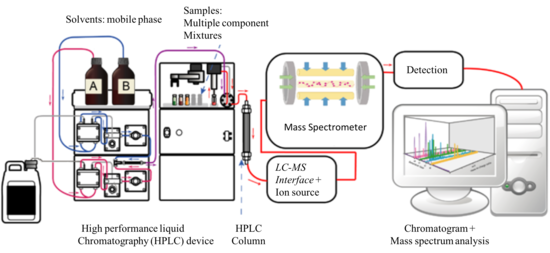Up until the past decade, testing for PFAS in water has been unstandardized. The EPA released its first PFAS testing method in 2015, and released another method for short-chain PFAS in 2019.
Both EPA methods use liquid chromatography-mass spectrometry (LC-MS), a complicated laboratory process that allows scientists to ascertain contents of a solution to a high degree of accuracy.
Liquid chromatography-mass spectrometry is actually a combination of two laboratory methods. LC separates an analyte (the solution that is being analyzed) into its physical components, and mass spectrometry ionizes the results and identifies those components.

LC-MS as an analytical method was developed over the course of the past 70 years. However, it requires lengthy training and uses hard-to-access lab equipment. Additionally, expensive solvents have to be consumed in running these tests. These limitations leave a demand for easy-access, fast screening methods for PFAS. To date, there have not been easy to access PFAS testing methods for homeowners; those that wish to get their water tested have to pay upwards of 80 dollars to send a water sample to a third party company.
Thus, a cheaper alternative is needed, not only for homeowner use, but for data collection to advance the field of PFAS knowledge. PFAS has lived in a dark age for the past 20 years, and it is time data is collected on these dangerous chemicals.
Sources
https://en.wikipedia.org/wiki/Liquid_chromatography%E2%80%93mass_spectrometry
Grebe, S., & Ravinder, S. (2011). LC-MS/MS in the Clinical Laboratory – Where to From Here? Reviews / Australian Association of Clinical Biochemists, 32(1), 5–31. https://www.researchgate.net/publication/50937180_LC-MSMS_in_the_clinical_laboratory-Where_to_from_here